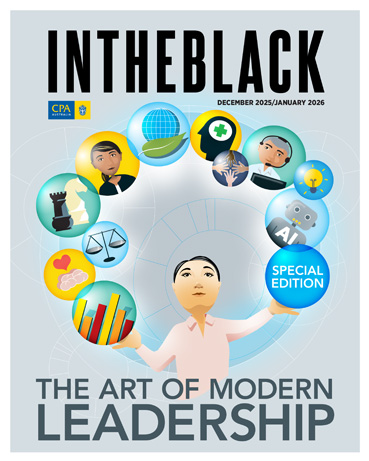Loading component...
At a glance
- Educating recruiters and HR departments of the benefits of creating multi-generational workplaces is critical.
- Only 25 per cent of HR professionals are open to hiring employees over 65 years.
- The workforce participation rate in Australia for those over 65 is currently 16 per cent.
After a decades-long career in corporate hospitality, Ian Fraser found himself unexpectedly looking for work in his late 50s.
His extensive experience in running major hospitality projects and events, including a British and Irish Lions rugby tour of New Zealand, the Sydney Olympics, two America’s Cups in Auckland and the 2006 Commonwealth Games in Melbourne, failed to land him a position in a competitive job market.
“I thought I would easily find work because of the experience I’d built up over many, many years. The long and short of it is, I applied for about 75 different roles and got just three interviews in that time,” Fraser says.
Fraser’s search highlights the challenges many older workers face in securing new employment opportunities and underscores the need for more inclusive hiring practices that recognise the contributions of seasoned professionals.
Fraser’s response to his experience was to create Seniors@work, a job platform specifically tailored to match job-seeking seniors with employers who are looking to hire people of all ages to join their workforce.
“Employers shouldn’t think that someone over 50 is past it, and they shouldn’t necessarily just be looking for younger people to fill a particular role.
“I see so many qualities in people aged 50 and over — experience, reliability, a strong work ethic, maturity and mentoring skills — and they’re not likely to be looking for their next job as soon as they start,” Fraser says.
Educating recruiters and human resource departments about the benefits of creating multi-generational workplaces is a critical step, he argues.
“The issue is that a lot of recruiters can be unfairly dismissive before they give an older job seeker a chance.”
Attracting and Retaining Talent
Addressing bias
While much has been written on the topic of ageism, the dial has been very slow to shift, says Australia’s age discrimination commissioner, Robert Fitzgerald AM.
“There is, and has been for a very long time, a diminished view of older people,” he says.
“The biggest reason why older persons are not engaged in the workforce is because of the underlying prejudices or biases in the recruitment process by both recruiters external to organisations and internal human resources departments.”
The Australian HR Institute’s 2023 Employing and Retaining Older Workers survey, conducted in partnership with the Australian Human Rights Commission, found that only a quarter of the nearly 300 HR professionals surveyed were open to hiring people aged 65 and above “to a large extent”.
Engaging older workers is not just a social responsibility, it is also an economic imperative. With people living and working longer, the workforce participation rate (who are employed or actively seeking employment) in Australia for those over 65 is currently at 16 per cent, having doubled since October 2006.
Fitzgerald points out, “That figure should be considerably higher going forward.
We’ve got to create an environment where people continue to want to work and are able to work subject to their capacity.”
The Intergenerational Report 2023 by Australia’s Treasury shows that the population will continue to age over the next 40 years, with the number of Australians aged 65 and over more than doubling. This trend is global and is already playing out in countries like Singapore, Malaysia and China where older workers are becoming a growing segment of the workforce.
"The biggest reason why older persons are not engaged in the workforce is because of the underlying prejudices or biases in the recruitment process by both recruiters external to organisations and internal human resources departments."
Fitzgerald believes that “older workers wish to work for longer periods, and an increasing number need to work for longer periods. Our economy also requires older people to be engaged in the workforce.”
It is a similar story in New Zealand, reflected in the numbers on the Seniors@work site, Fraser adds. The types of positions advertised range from administrative and office roles to customer service and warehouse, as well as payroll and accounts, health care and caregiving, and driving roles.
“We’ve got about 6000 registered job seekers on the site. The roles are across the board and are suitable for people over 50,” he says.
“There are some employers who proactively encourage and welcome mature job seekers, and they list with us on a regular basis.
“Others we approach may say that they are attracting applicants across all age groups, and they don’t need us, which is great if that is what they are actually doing and it translates into hiring people of all ages,” Fraser says.
Taking a multigenerational approach is a critical part of the solution, Fitzgerald says.
“It’s actually about multigenerational workplaces, because that’s where real productivity and benefits arise not only for the workers, but also for the employee bodies.
“We are seeing good practice — or movement towards good practice — in individual organisations, but we are not seeing an industry-wide or sector-wide approach, which will give impetus toward the employment and retention of the older workers,” he says.
Adapting to changing needs

In an industry such as accounting that is struggling with a skill shortage, retaining and attracting older employees makes good business sense, says Richard Webb, superannuation lead at CPA Australia.

“I think we often look at the other end of the spectrum where we want to encourage more students to take up accounting. Keeping good accountants who know what they’re doing is also an excellent way to make sure we have enough accountants in the industry,” Webb says.
Providing flexible work options and financial incentives are two important parts of the puzzle that may help more people retain employment or find some version of employment that suits their age and lifestyle, he says.
“Most people retire with a modest amount of superannuation and some or all eligibility for the age pension. A lot of people reach retirement and start drawing down their super and receiving the age pension, then realise that they may not have as much money as they thought — that’s a key driver for seniors deciding they’re going to go back to work again.”
"I see so many qualities in people aged 50 and over — experience, reliability, a strong work ethic, maturity and mentoring skills — and they’re not likely to be looking for their next job as soon as they start."
The problem is that there are financial penalties for earning too much, Webb says.
“We already have some levers to use in Australia, including the Work Bonus that allows people to earn some money in retirement before it affects their social security, but perhaps there are others to explore, particularly in areas where there are skill shortages.”
Increasing the limit on earnings from A$300 per fortnight (for the Work Bonus) is an example, he argues.
“Wouldn’t it be great to entice retired accountants back to the workforce with some kind of targeted incentive. We could give a little bit more leeway than the A$300 that’s provided for.”
Ageism in the workplace overlooks experienced employees
Embracing flexible options
Co-chair of CPA Australia’s Victorian Third Age Network (TAN), Gloria Sleaby FCPA, says taking a flexible approach to engaging older workers can help with the skills shortage.
“The benefit of keeping older people is you don’t need to train them in the basics of workplace behaviour,” she says. “Really, all you have to teach them is the nuance of your own company.”
Offering part-time opportunities including job-share arrangements and encouraging older people to work out their own work-life balance are steps employers could be looking at, Sleaby says.
“It’s a win-win for any organisation, because younger people need mentors and older people can help lift people’s skills.
It should almost be part of the succession plan of the business to rotate the early learners with those who are more experienced.”
One thing that stops that from happening is a fear of having a conversation about retirement. Unlike people beginning their career, where advice is available to help people plot their path, there is no equivalent when your career is winding down, Sleaby adds.
"People are living longer, retirement age is increasing, and superannuation rules allow for a ‘transition to retirement’, which all lead to people wanting to stay in employment longer."
“It would be good if it could be painted as a relaxed and normal conversation. We all want to stop working at some point, so why don’t we ask, ‘Where are you on that scale?’ Don’t be afraid to have that conversation if people want to have it,” she says.
“People are living longer, retirement age is increasing and superannuation rules allow for a ‘transition to retirement’, which all lead to people wanting to stay in employment longer,” Sleaby says.
Although, this doesn’t necessarily mean staying in full-time employment.
“Retirement for some people means having a work and leisure balance that provides enough time to play and enough time to work, so they can enjoy both — especially if they have the financial ability to do both.
“That’s the biggest retainer of people — creating the right environment so they can enjoy their work and have a sense of purpose,” Sleaby says.

